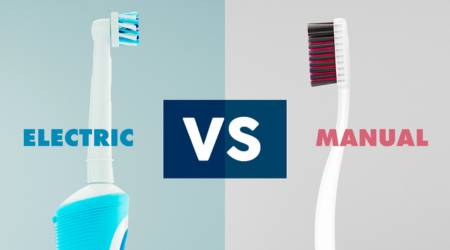Sterilization in Dentistry


January 29, 2024
Electric toothbrush v/s Manual toothbrush
The most frequent question patients ask us is this, “Which one is better, an electric toothbrush or a manual one?”. Well the answer is, both do the same job of cleaning your teeth and removing the debris.
Both electric toothbrushes and manual toothbrushes have their own advantages and disadvantages.
The use of Electric or powered toothbrushes arise in these scenarios:
- Helpful for elderly people
- People with disabilities
- Children wearing dental appliances like orthodontic braces
- People who are on a busy schedule as they don’t get enough time to perform proper brushing.
- Helpful for those who exert excessive pressure while brushing with manual toothbrush
The advantages of powered toothbrushes are
- that it has a timer ensuring that you brush your teeth 30 seconds per quadrant,
- a pressure indicating light which monitors or indicates when the pressure exerted while brushing is excess reducing your risk of gum recession
- Has large handles for easy grasping of the toothbrush.
The only disadvantage of an electric toothbrush is that it is expensive
Here’s how you can brush your teeth using a powered toothbrush effectively:
Manual toothbrushes are easily available and are much cheaper. A soft bristle toothbrush is all required to remove the dental biofilm present on your teeth.

The disadvantage of manual toothbrush is :
- Excessive application of pressure on the teeth while brushing causing gum recession. There is no need to brush too hard or scrub, move the brush from tooth to tooth gently and let it do the work
- Improper brushing technique leading to abrasion of teeth

Brushing twice daily for 2-3 minutes and replacing the toothbrush / toothbrush head every 3-4 months or if bristles are visibly matted or frayed, plays the important role of keeping your oral cavity clean.
Dr Padmini Vaddavalli / About Author
Dr Padmini is dedicated to crafting beautiful smiles with personalized treatment plans for every patient.
